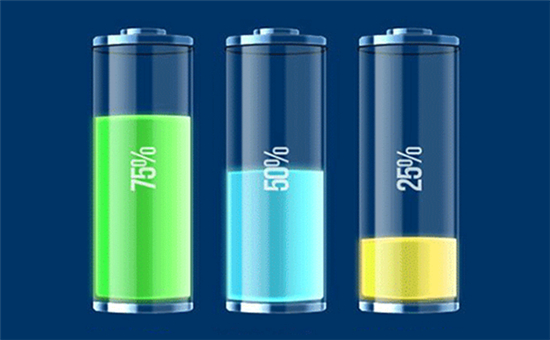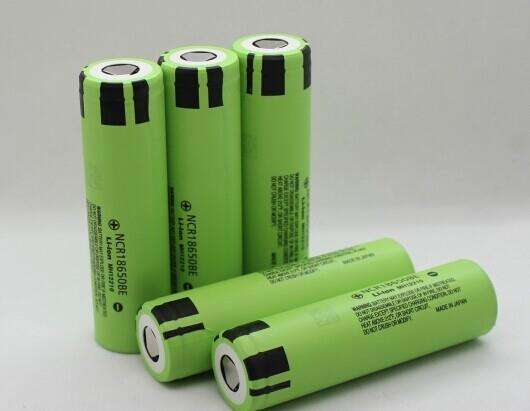Li-ion Battery Charge Cycles
Sep 29, 2019 Pageview:2815
The focus of most battery research is now majorly on lithium chemistry. With this level of research, you can imagine the future of batteries is entirely lithium. You will be forgiven for being optimistic, and for good reasons too -the chemistry of lithium-ion batteries is way superior to the other chemistries, and in many ways too. The application of these batteries is growing fast and is entering markets where there have previously being a stronghold by the lead-acid batteries. There are also manyspecials which are powered by lithium-ion batteries, the applications are endless.
The lithium-ion battery market is not yet fully mature and continues to improve. Significant progress has been made in terms of longevity and safety, with capacity increasing gradually. Today, a lithium-ion battery can meet the expectations of most consumer devices. Applications for electric vehicles, however, must be developed further for this energy source to become a recognized standard.
In this article, we want to discuss the charge cycles of lithium-ion batteries.
What cycles mean for batteries?
The charge cycle of a battery is the process of charging of the rechargeable battery and then discharging the battery as need be. This term is generally used to indicate the expected life of a battery because the amount of charge cycles of a battery affects the service life more than just the passage of time. The full discharge of a battery before it is recharged again is referred to as "deep discharge". The partial discharge and consequent recharging are known as "shallow discharge".
Generally, the number of cycles in a rechargeable battery shows how often a complete charge and discharge can be accepted by the battery before it starts to fail or lose storage capacity.
Apple Inc. states that a charge cycle of devices represents the complete use of the full capacity of the battery of the device. But they were quick to add that it does not necessarily have to be from 100% to 0%: “a complete charge cycle is completed when you use up the entire battery capacity, or the charge equivalent to it, at any time -and it doesn’t have to happen in a single day. It doesn’t also have to be from a single charge. For instance, you may use up 65% of your battery yesterday, charge the battery overnight, and use another 35% today, you have effectively used up one charge cycle. These two-day usages add up to one single charge cycle.”
How many charge cycles does a phone battery have?
Do you wonder if your phone battery does last as long as it should? Many people do, so you are not alone.
In general, the battery life of a modern (lithium-ion) phone has a life span of about 2 to 3 years, this represents 300 to 500 charging cycles, and depending on the manufacturer's rating. Subsequently, the capacity of the battery is reduced by about 20%.
But then, some people have experienced that their phone battery life is shorter than the 2 – 3 years typical. If this is you, then your battery charging habit may have played a role in affecting the battery life of your phone
The frequency with which the battery is charged has a positive or negative effect on the life of the battery. In short, the more you charge the battery of your mobile device, the better for it. In other to reduce the degradation of your battery, make sure you charge the battery for every 10% drop in its level. Also, ensure you keep the battery level as close to the mid-point as possible (that is 50%). It may sound impractical, but that is how to optimize the battery life of your mobile device. There is plenty of room to adjust and ensure your comfortability as you do it.
Why do battery experts recommend this? Unlike nickel batteries, lithium-ion batteries are subject to the following constraints:
· Depth of discharge. This is also known as the level of battery consumed before the battery is recharged.
· Extreme battery charge, low or high.
Most of the lithium-ion batteries in circulation today are designed to withstand (or rated) 400 to 500 full charge cycles (this is on the average, 1 to 1.5 years). Once that point is reached, the battery capacity falls below 80% and recharging may take longer because of the change in the chemical composition (or change in battery chemistry).
Some smartphone makers ensure that their smartphone batteries do not charge to the specified physical capacity, this is done in other to prevent or keep degradation in check. The batteries from these manufacturers often stop charging once it reaches a capacity of about 90%, (however, the software may show you that the battery is 100% full). For example, a Galaxy S8 device can retain about 95% of the battery capacity even after two years, this is the idea behind that strength.
How to prolong lithium-based batteries
1.ensure your batteries are kept at room temperature
What this signifies is that your batteries must remain around 20 to 25 degrees Celsius. It is a very bad thing for a lithium-ion battery to be fully charged and be exposed to high temperatures at the same time, this could be devastating. Endeavor not to charge the battery of your mobile devices in your car during hot weather. One of the biggest factors when it comes to the reduction or extension of your lithium-ion battery life is heat.
2.Consider using a high-capacity lithium-ion battery Instead of carrying a spare around.
We all know that with time, batteries will deteriorate. It doesn’t matter if they are being used or not. So knowing this should tell you that your spare battery will not last longer than the one you are currently using. There is an age factor in batteries, and you must remember this when placing your order. So always ask for the batteries with the most recent manufacturing date.
3.Avoid full discharges, instead allow only partial discharge.
Unlike NiCad batteries, the lithium-ion batteries have no charge memory. In other words, deep discharge cycles are not necessary. It is preferable in terms of the battery that you use partial discharge cycles.
However, as in everything, there is an exception. It is suggested by battery experts that after 30 charges, you allow your li-ion battery to almost discharge completely. This is advised because a continuous partial discharge brings about what is known as digital memory, and this decreases the accuracy of your devices’ battery gauge.
Also, do not completely discharge your lithium-ion battery below 2.5 volts, else the battery may be dead completely. If you are storing your device, or will not be using it for a long time, ensure to charge your battery to not more than 40% of its capacity. And it must be stored in a dry and cool place.
- Prev Article: 18650 Lithium-Ion Battery Pack
- Next Article: Recharging Non Rechargeable Lithium Batteries
Leave Message
Hottest Categories
-
Hottest Industry News
-
Latest Industry News











